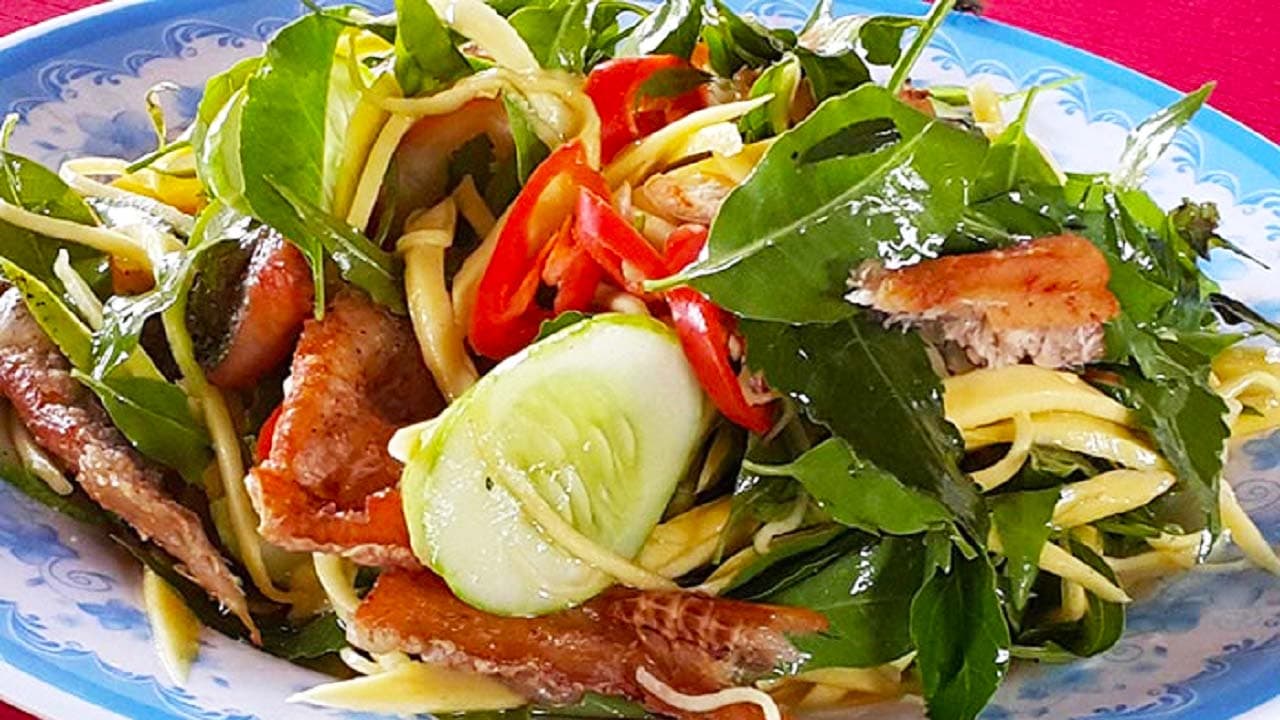Durian salad can be said to be the most famous dish of An Giang. Durian salad in An Giang originates from Khmer dishes. Durian leaves are processed into many dishes, the most popular is durian dipped in braised fish. From shrimp salad, meat salad, fish salad to dry salad, everything is perfect. Combined with other types of dry salty taste: salad where durian, where fish is, salad where dried snakehead fish. Become a specialty of the West causing nostalgia for tourists from far away.
Where’s the salad?
- Address: Chau Doc Night Market, Bach Dang, Chau Phu A, Chau Doc, An Giang.
Source: Collected internet.
The Vietnam National Gene Bank preserves 12,300 varieties of 115 species. The Vietnamese government spent US$497 million to maintain biodiversity in 2004 and has established 126 protected areas including 28 national parks. Vietnam has 2 world natural heritage sites: Ha Long Bay and Phong Nha - Ke Bang National Park and 6 biosphere reserves including Can Gio, Cat Tien, Cat Ba, Kien Giang, and River Delta mangrove forests. Hong and Tay Nghe An.
Vietnam is a country with 54 different ethnic groups, each of which has its own unique and impressive culture and identity. It is this difference in ethnic composition that has contributed to creating a very diverse, rich and unique beauty for Vietnam's culture that no other country can replace. Customs in Vietnam have a long tradition spanning thousands of years, it has become customary law, deep and firmly embedded in the hearts of every Vietnamese person.
Vietnam's history began from 1 to 2 thousand years BC. Over many centuries with the Ly, Tran, Le, and Nguyen dynasties, from the mid-19th century, Vietnam became a French colony. After the August Revolution, the Democratic Republic of Vietnam was born. The Battle of Dien Bien Phu in 1954 marked the end of the French in the territory, but Vietnam was divided into two countries: the Democratic Republic of Vietnam in the North and the Republic of Vietnam in the South. After the events of April 30, 1975, Vietnam was unified and from July 2, 1976, officially named the Socialist Republic of Vietnam.
Nha Rong Wharf and Ho Chi Minh Museum, Ho Chi Minh City Branch, at 1 Nguyen Tat Thanh Street, District 4, Ho Chi Minh City. This place not only displays artifacts associated with his life and career, but also especially marks the event that on June 5, 1911, President Ho Chi Minh left Vietnam from Nha Rong Harbor to begin his journey. traveling around the world to find a way to save the country and liberate the nation from the yoke of French colonialism...
